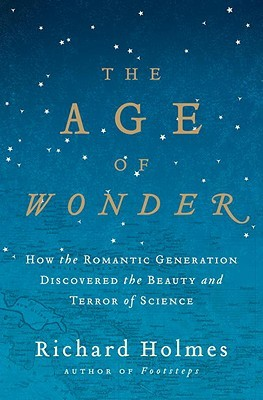In the vast expanse of literary offerings, few find themselves as captivating as “The Age of Wonder” by Richard Holmes. This compelling narrative delves into the intellectual climate of the Romantic era, illuminating the contours of a world where science and the arts intertwine as intimately as the celestial dance of the planets themselves. But, let’s pose a playful question: What happens when the rigorous scientific inquiry of men like William Herschel and the fervent passion of Romantic poets converge? Could it ignite a revolutionary understanding of not just the universe, but of humanity itself?
Holmes marshals an impressive array of historical figures to demonstrate how the Romantic generation, straddling the late 18th to early 19th centuries, discovered not merely the beauty of science but perhaps its underlying terror. The book is more than a mere chronicle; it’s an exploration of the symbiotic relationship between emotion and empirical inquiry, framed against a backdrop of burgeoning scientific discoveries that were reshaping the fabric of society.
This period was remarkable for its innovations, from the mesmerizing spectacle of the night sky observed through delicate telescopes to the radical ideas that challenged established norms. Think of Herschel, the astronomer who first discovered the planet Uranus. His passion for the heavens, coupled with an almost childlike wonder, is something that Holmes captures beautifully. Readers are thrust into the exhilarating excitement of discovering something brand new and seemingly magical, drawing us into a narrative that compels us to reflect on our own enthusiasm for exploration.
But herein lies a potential challenge: as we dig deeper into this era of enlightenment and emotional fervor, we are compelled to consider if our current relationship with science is quite as wondrous or if we have merely become jaded in our modernity. Has the relentless pursuit of knowledge dulled our capacity for awe? To quote Holmes, “Wonder is the seed of knowledge, and curiosity is its soil.” Are we nurturing this seed in today’s world, or are we allowing it to wither due to frivolous distractions and an overload of information?
As Holmes masterfully intertwines the individual stories of luminaries, he juxtaposes their scientific pursuits with the fervent creative expressions prevalent during the Romantic period. Figures like Wordsworth and Coleridge were not isolated from the advancements in natural philosophy (an early term for science); rather, their poetry was often inspired by the same awe that drove scientific discovery. This cross-pollination of arts and sciences provokes a critical analysis of our understanding of each discipline. Could it be that the arts and sciences hold the keys to a more enriched existence, urging society to embrace a holistic approach that celebrates both the measurable and the ineffable?
The challenges posed by the revelations of the Romantic generation resonate today, particularly as contemporary society grapples with the implications of cutting-edge science. For instance, think about the ethical conundrums surrounding genetic engineering and artificial intelligence. Each leap forward invites exhilarating possibilities, yet simultaneously evokes trepidation about the unknown consequences. As Holmes chronicles the triumphs of the past, he also highlights the central ambivalence: the simultaneous celebration and fear of the unknown.
The book’s structure—navigating through historical narratives interwoven with vivid biographical sketches—gives context to this exploration. It draws readers into the lives of its protagonists in a way that is immersive, allowing the reader to feel the pulse of the Romantic zeitgeist. As Holmes writes of the scientists who stepped into the abyss of the unfamiliar, we are reminded of the inherent risks that accompany innovation. What do we stand to lose in our unyielding quest for advancement? This critical inquiry is a thread that runs throughout the text, prompting readers to question their complacency in the face of progress.
Furthermore, the author’s intellectual prowess shines through in his nuanced storytelling. He does not shy away from the flaws and failings of his characters, rendering them human. Herschel, for instance, although a figure of immense significance in astronomy, was not without his moments of doubt and uncertainty. This complexity enriches the reader’s experience, as it emphasizes the reality that progress is often messy and fraught with challenge, a dance of light and shadow.
The legacy of the Romantic generation is one of profound curiosity and unbridled enthusiasm, characteristics that feel relevant today as we navigate our own age of rapid advancement. Adventure thrives in inquiry, in the spaces between knowing and not knowing. As Holmes expertly depicts, the much-cherished “Age of Wonder” reminds us that slipping into apathy or cynicism is perhaps one of the greatest threats to innovation and artistic expression.
In conclusion, “The Age of Wonder” emerges as a beacon illuminating the intricate tapestry of science and art, beckoning readers to partake in the journey of discovery, reflection, and intellectual curiosity. Richard Holmes not only chronicles a period of remarkable individuals and their contributions but also ignites the spark necessary to rekindle our sense of wonder in an ever-evolving world. So, as we delve into this stimulating narrative, perhaps the task at hand is not just to read but to engage deeply with the questions it provokes. What if we, too, approached the sciences and arts with the same childlike curiosity that drove the Romantics to explore the skies and question life’s very essence?
